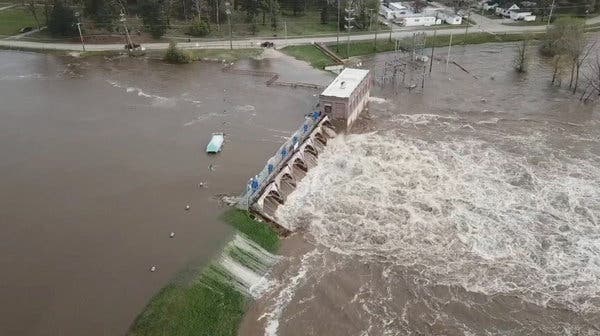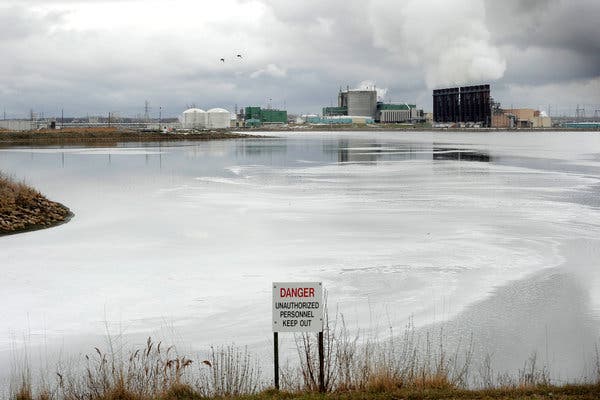Floodwaters from two breached dams in Michigan on Wednesday flowed into a sprawling Dow chemical complex and threatened a vast Superfund toxic-cleanup site downriver…
Raising concerns of wider environmental fallout from the dam disaster and historic flooding.

Do you remember last year, when the Spencer Dam in Nebraska failed? Well this year, two dams breached in Michigan, triggering historic flooding… Again! And the catastrophic floods engulfed two chemical plants, raising concerns about the real environmental concerns of the catastrophe.
The compound, which also houses the chemical giant’s world headquarters, lies on the banks of the Tittabawassee River in Midland, where by late Wednesday rising water had encroached on some parts of downtown.
Kyle Bandlow, a Dow spokesman, said that floodwaters had reached the Dow site’s outer boundaries and had flowed into retaining ponds designed to hold what he described as brine water used on the site.
The Superfund cleanup sites are downriver from the century-old plant, which for decades had released chemicals into the nearby waterways.
The concern downriver is that contaminated sediments on the river floor could be stirred up by the floodwaters, spreading pollution downstream and over the riverbanks.
“You worry about the speed of the current, this wall of water coming down the river,” he said. “It just has a huge amount of power.”
Mr. Bandlow of Dow said the company was “implementing its flood preparedness plan, which includes the safe shutdown of operating units on site,” which still manufactures plastics and other chemical products. He said only essential Dow staff remained on site to monitor the situation and “manage any issues as a result of the flooding.”
Dioxin and a small nuclear reactor
Over the years the Dow complex has manufactured a range of products including Saran Wrap, Styrofoam, Agent Orange and mustard gas.
Over time, Dow released chemicals into the water, leading to dioxin contamination stretching more than 50 miles along the Tittabawassee and Saginaw Rivers and into Lake Huron.
Research has shown that dioxins can damage the immune system, cause reproductive or developmental problems, and cause cancer.
There is also a tiny nuclear research reactor on the site, used to create material that can be used in product experiments.
Overnight, Dow filed an “unusual event” report with the federal Nuclear Regulatory Commission warning of potential flooding at the site.
But the reactor had already been shut down because of the coronavirus crisis, and there were no indications of flood damage on Wednesday.

A federally funded Superfund cleanup of the Tittabawassee River began in 2007, and was slated for completion next year. Cleanup of other contaminated waterways is set to take longer.
“I would hate to see 13 years of work literally go down the drain if this flood wipes away the effort,” said Terry Miller, chairman of the local environmental group, Lone Tree Council, which has for years campaigned for a cleanup. “We were almost nearing the end.”
A 2018 New York Times investigation found that while Mr. Wright led Dow’s legal strategy relating to the cleanup, the chemical giant was accused by regulators, and in one case a Dow whistle-blower, of submitting disputed data, misrepresenting scientific evidence and delaying cleanup.
A federal report published last year found that 60 percent of Superfund sites overseen by the E.P.A., or more than 900 toxic sites countrywide, are in areas that may be affected by flooding or wildfires. More signs of the End Times on Strange Sounds and Steve Quayle. [NYT]












it is sad story and they said 3 dams broken then news says only 2 dam so which one is correct? USA becoming a third world country?